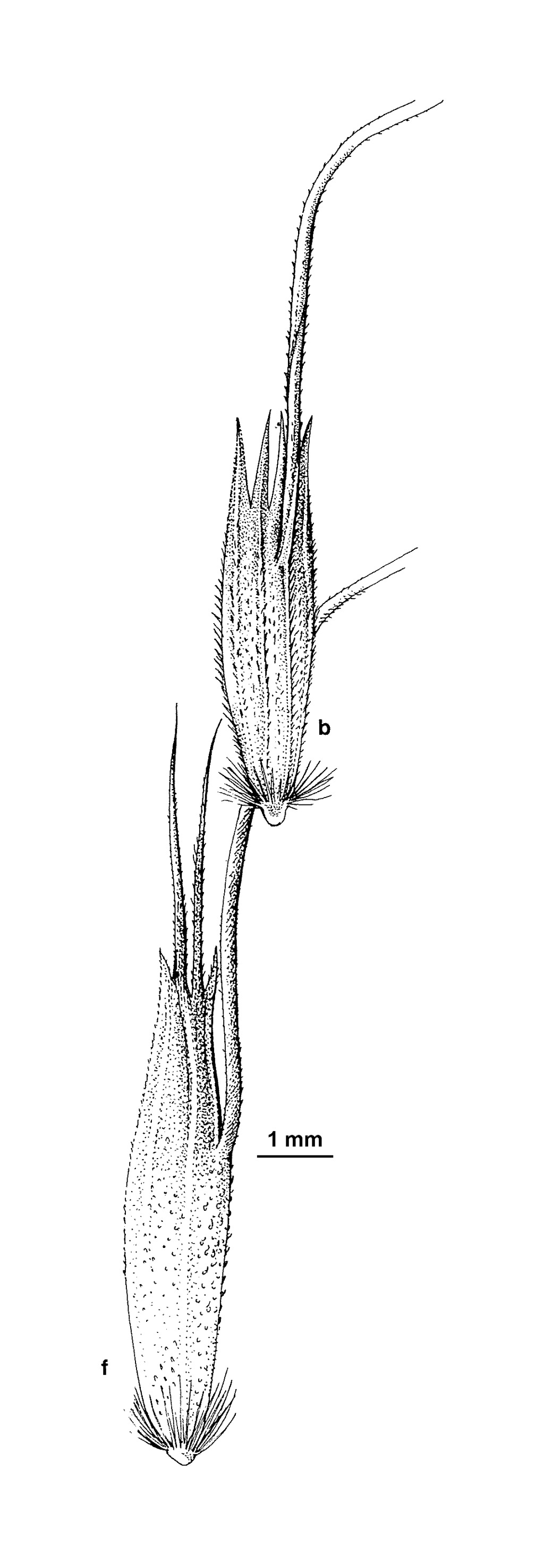Amphibromus archeri
(Hook.f.) P.Morris Pointed Swamp Wallaby-grassTufted perennial, occasionally with swollen basal internodes; culms to 1.5 m high. Leaves glabrous, finely scabrous; blade flat to inrolled, to 35 cm long and 2.5–5 mm wide; ligule acute, 5–12 mm long. Inflorescence typically an open, spreading panicle, to 35 cm long. Spikelets 3–7-flowered, 12–18 mm long (excluding awns), green or purplish; glumes acute, the lower 3–5-nerved, 5–7 mm long, the upper 5–7-nerved, 6–9 mm long; lemma 6–9 mm long, smooth to tuberculate, apical teeth 4, usually purplish, the inner pair extended into bristles 2–4 mm long, the lateral pair with reduced bristles or bristles lacking; awn 13–18 mm long, inserted 30–45% of the lemma length from the apex, column 4.5–7 mm long; palea from one-half to three-quarters as long as lemma. Flowers Oct.–Jan.
Wim, GleP, VVP, GipP, OtP, WaP, Gold, CVU, GGr, DunT, EGL, EGU, HSF, HNF, Strz. Also SA, Tas. In swamps of (mostly) southern Victoria, often within areas of predominantly sandy soils supporting heathland and heathy woodland; scattered and uncommon.
The var. papillosus P. Morris (1934) was erected for those specimens with more strongly papillose lemmas, but as there appears to be continuous variation in this attribute within the species, the variety is no longer recognised.
Walsh, N.G. (1994). Poaceae. In: Walsh, N.G.; Entwisle, T.J., Flora of Victoria Vol. 2, Ferns and Allied Plants, Conifers and Monocotyledons, pp. 356–627. Inkata Press, Melbourne.
 Spinning
Spinning

